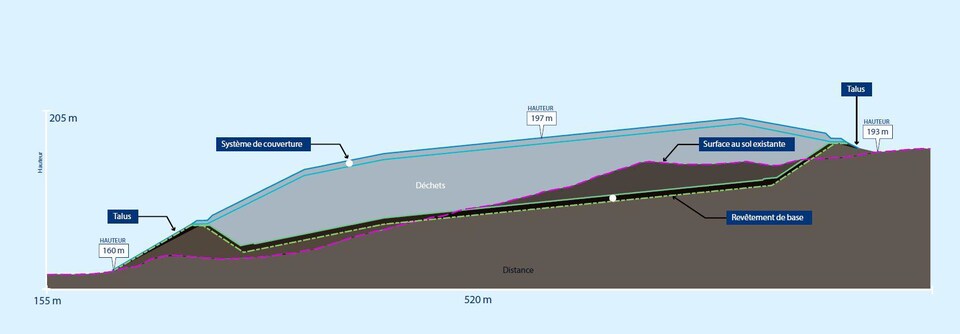The municipalities of Greater Montreal remain opposed to the construction of a radioactive waste management facility in the Chalk River area of Ontario, even though they agree that the project has been “improved” since its previous version.
This was important explained by the representative of the Metropolitan Community of Montreal on Monday (CMM) in this case, Maja Vodanovic, on the first day of the public hearing on the license application filed by Canadian Nuclear Laboratories (CNL), a private consortium led by SNC-Lavalin.
Si Ms. Vodanovic, who is also the mayor of the borough of Lachine and the head of water on the executive committee of the City of Montreal, came to participate in the Canadian Nuclear Safety Commission (CNSC) the concerns of 82 municipalities of Greater Montreal regarding this project.
His brief was following a resolution dated April 28, in which the CMM opposed to the project in its current form, particularly because of its potential impact on drinking water supply sources.
Because the Chalk River nuclear facilities are located 300 km upstream from Greater Montreal, next to the Ottawa River. So the interest of CMM in this file – an interest he shares specifically with Pontiac residents and mayor of Gatineau, France Bélisle, who are also opposed to the project.
A 70 year legacy to manage
The memory of CMM was accompanied by a report from the Association for Radioactivity Control in the West (ACRO), a French organization that brings together experts in the field of nuclear, which separates the documents submitted by CNL in support of his permit application.
For 70 years, the Chalk River nuclear complex has had approximately 120 dilapidated buildings that must now be demolished. It is important to store the debris CNLappointed by Atomic Energy of Canada to manage the site, now wants to build a new dump.
Their wish: build near the ground surface an artificial mound consisting of a dozen “cells” – layers of natural and synthetic materials – that will be superimposed on each other over time.
The CNL Wants to operate this facility for approximately 50 years. Eventually, the mound will reach a height of 18 meters, with a storage capacity estimated at 1 million cubic meters.
This solution will replace the current practice of CNLconsisting of storing waste in a temporary placeexplainsACRO.
Such business, presented to the public for the first time before the CNSC at a hearing held in January 2018, first caused concern to some stakeholders, including CMMwho voted in April following a resolution to oppose the project.
In an attempt to reassure opponents, the project’s promoter has since promised not to store medium-level radioactive waste, as it initially wanted. But concerns persist, especially about the Ottawa River, one of the main sources of drinking water for Montrealers.
In his memoir, the CMM wonders, for example, about the ability of a private entity to ensure long -term site monitoring, which should last more than 500 years.
In front, there CNSCMrs. also regretted. Vodanovic on Monday that, contrary to his promise, the Canadian government has not yet modernized its strategy for nuclear waste management, despite a request for this impact developed by the International Agency for Atomic Energy (IAEA).
The CMM believes that the Chalk River project, which is the first permanent storage of nuclear waste in the country, should not be approved before this approach is adopted.he says.
The hearing before the CNSC continues throughout the week, until Friday. It was held in Pembroke, Ontario. except CMMdozens of speakers had to speak.
If the CNSC approved the project despite everything, the memoir of CMM It is recommended at the very least that the promoter is required to improve his or her project, or even consider entrusting project management to an entity independent of the main “producer” of waste.
Source: Radio-Canada
